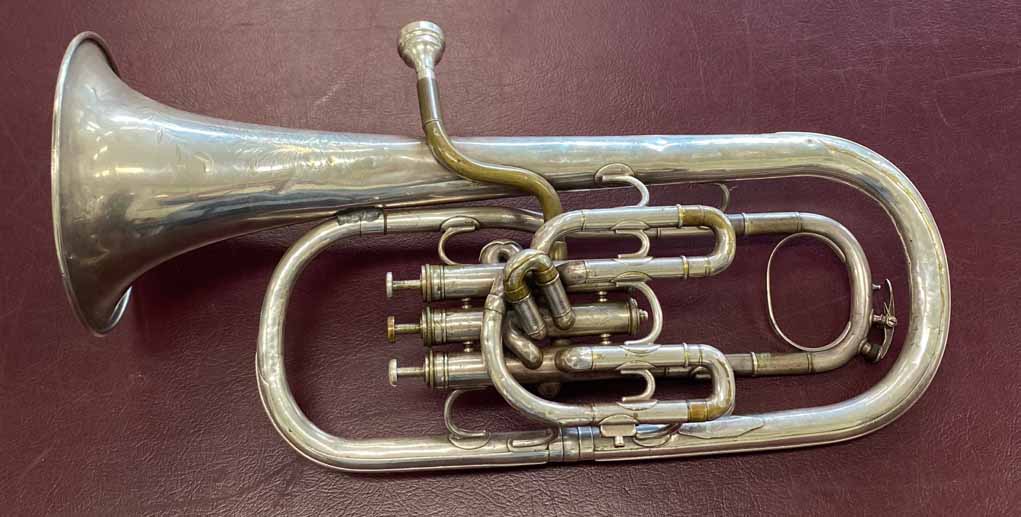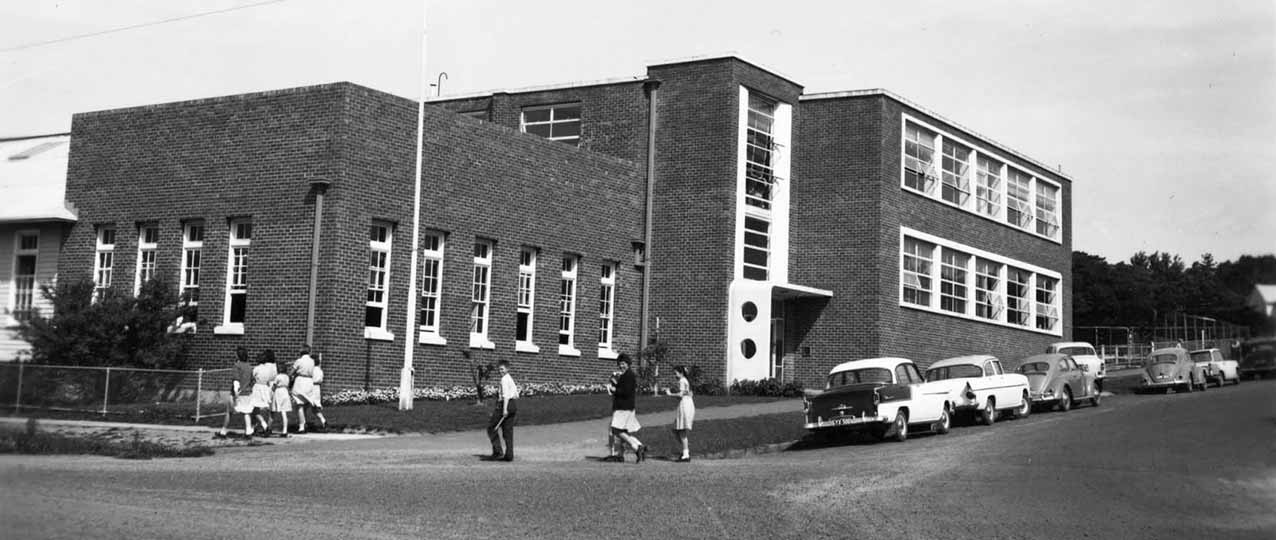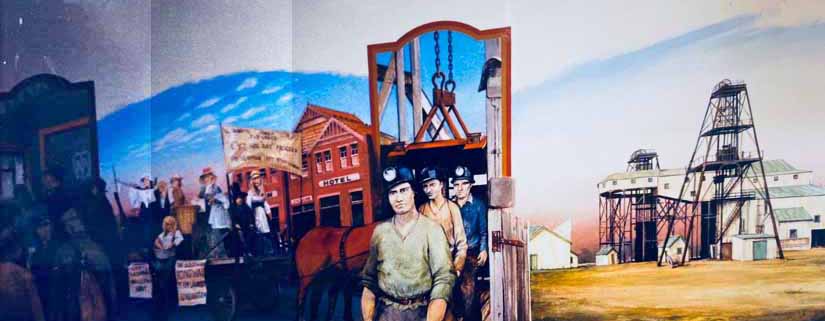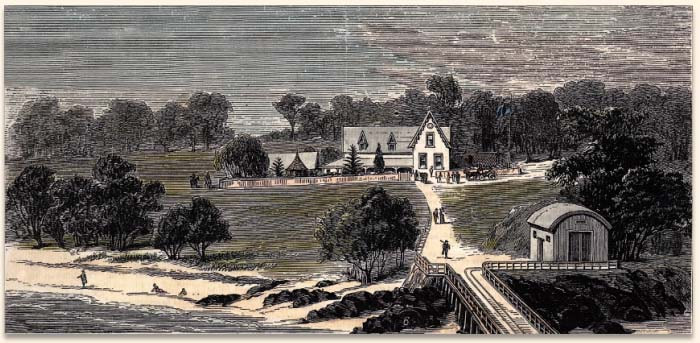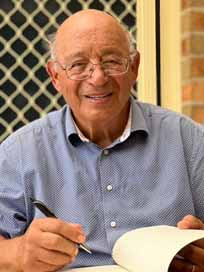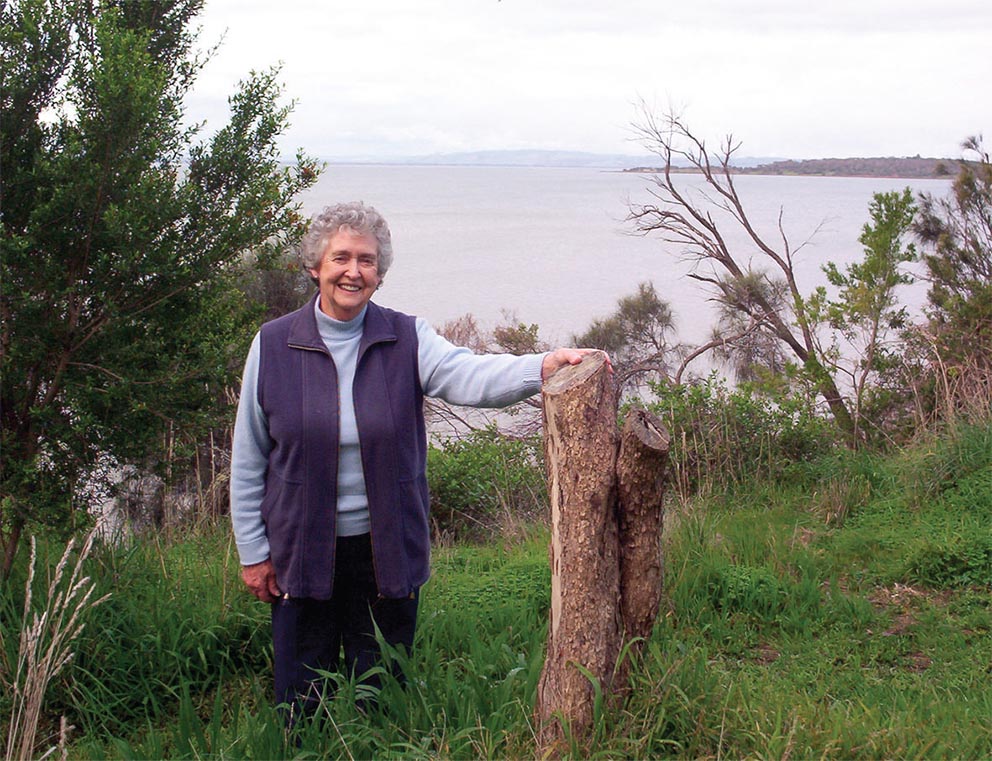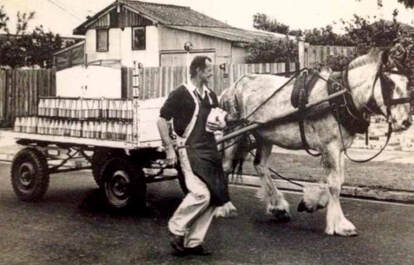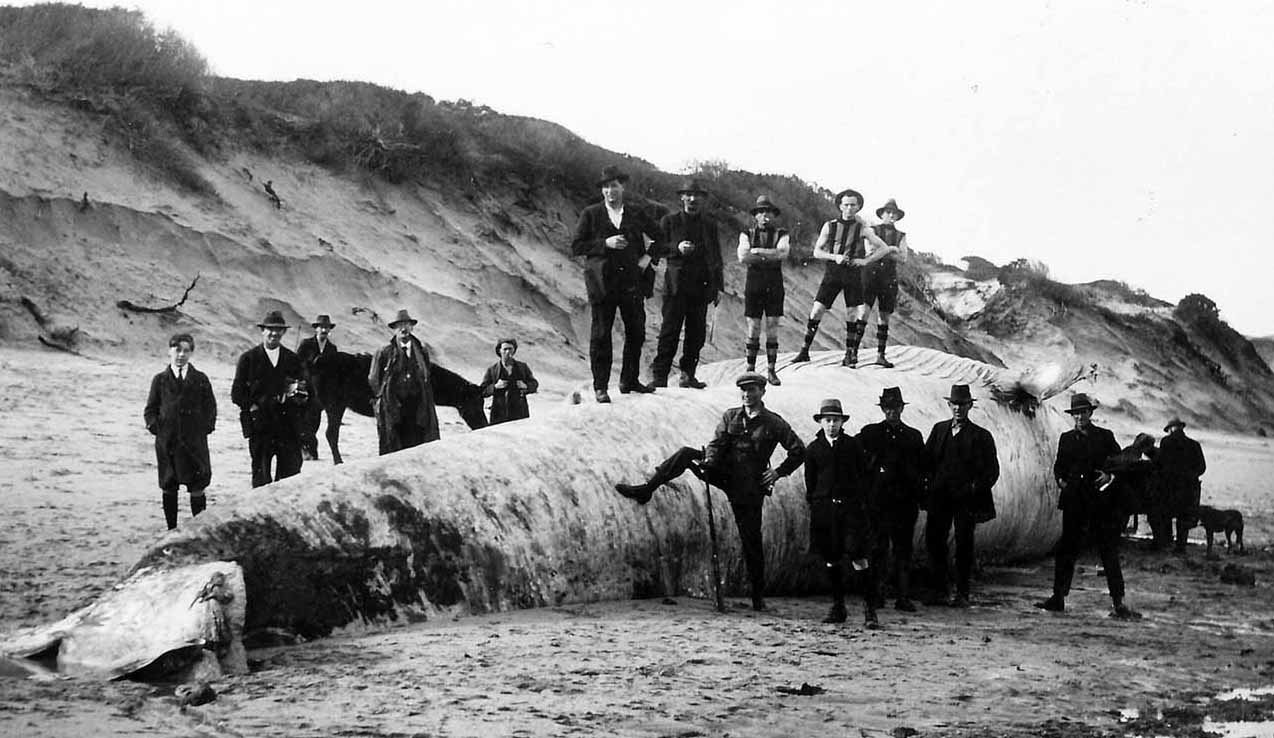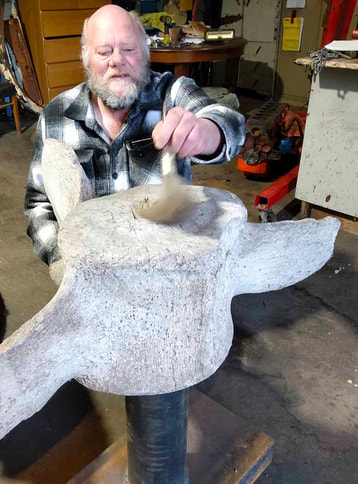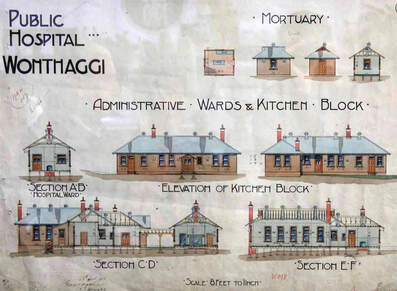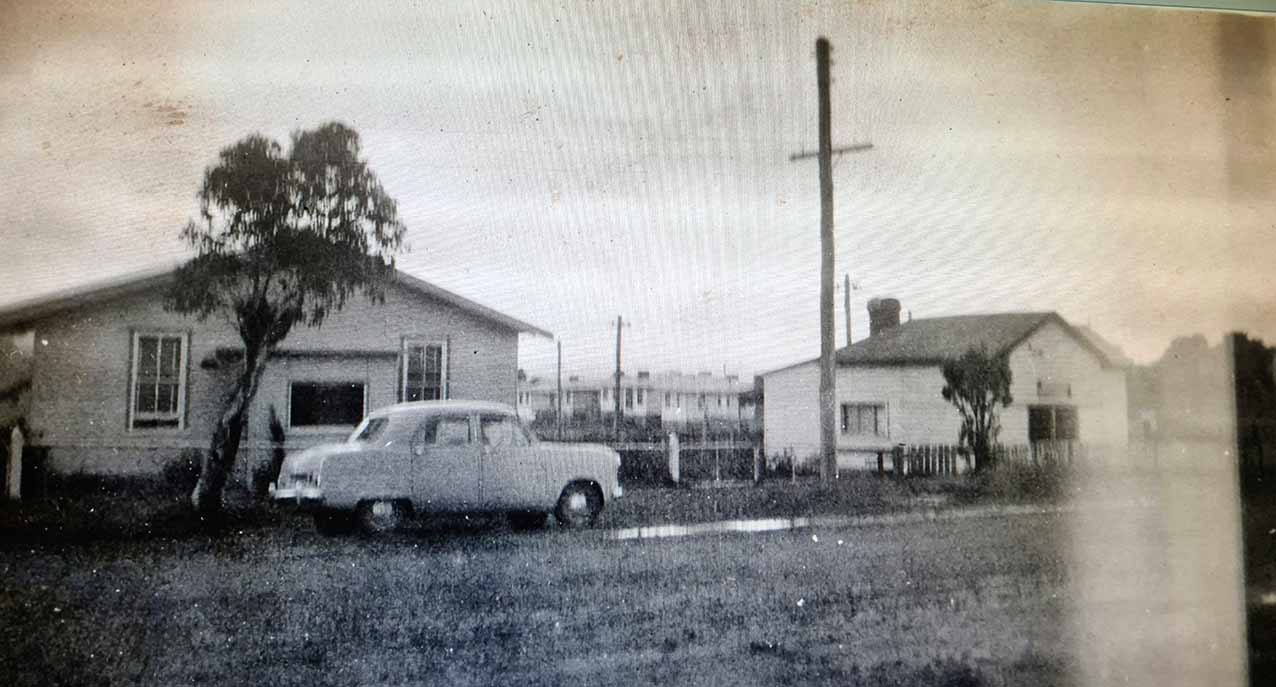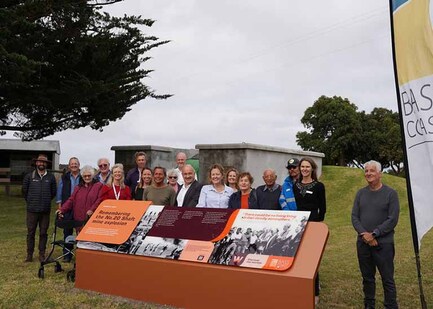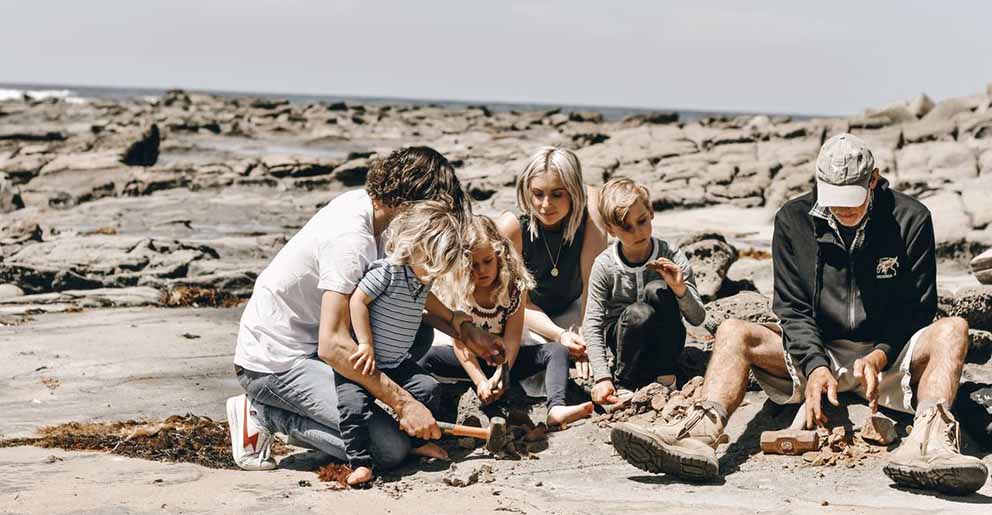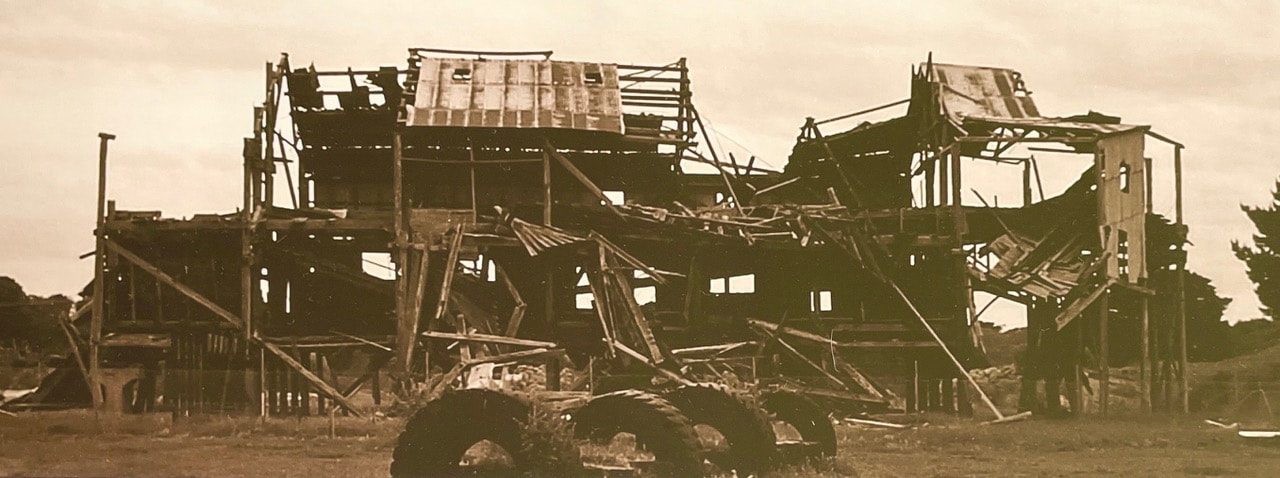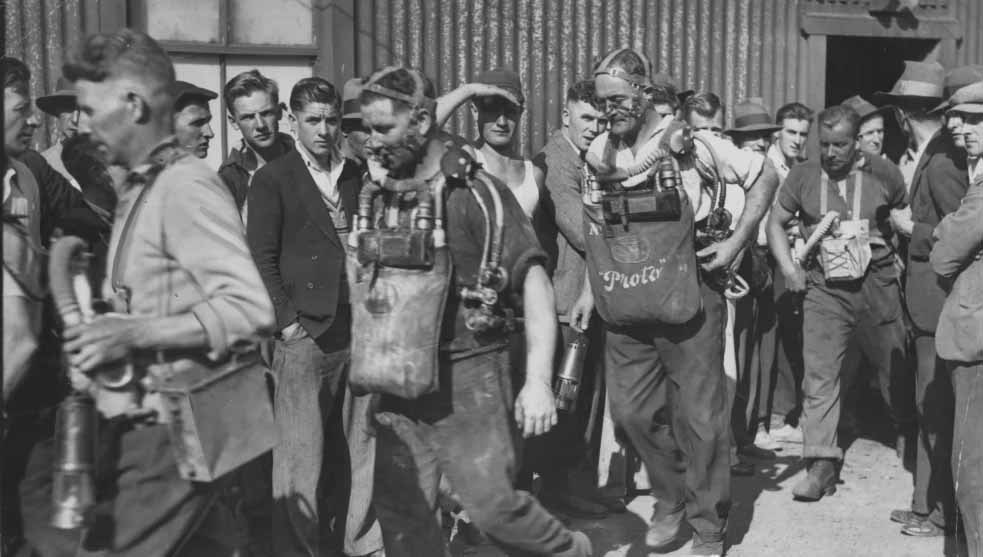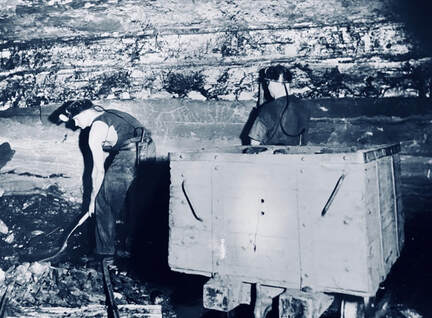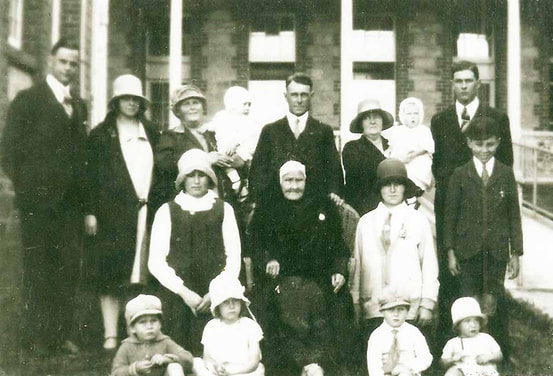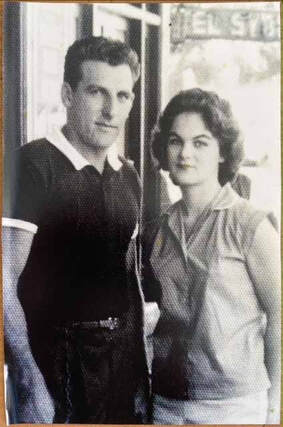 The Red Rattler passes through Kilcunda en route to Melbourne.
The Red Rattler passes through Kilcunda en route to Melbourne. The line between Woolamai and Wonthaggi was completed in
just 10 weeks, mostly by men with picks and shovels.
All photos Wonthaggi & District Historical Society.
SEVERAL weeks ago, Larry and I were on our way to Melbourne and found ourselves, even before we got out of Wonthaggi, behind a long line of slow-moving cars. Road works! We decided to turn off the highway and take the Loch Road, which eventually, if you know the way, turns off towards the Gurdies and soon enough puts us back on the road past Grantville, leaving us relaxed and clear-headed as we drive on to the city.
As the passenger in the car, I was able to survey the gorgeous meandering road, the valleys and steep slopes of the green hills and of clumps of tea tree and tall gums, all the time keeping an eye out for the occasional wombat or wallaby. We turned left off the Loch Road onto the Grantville-Glen Alvie road and then right towards the store at Kernot which marked the left turn onto Stewart Road that took us across the Bass Valley towards the Gurdies.



